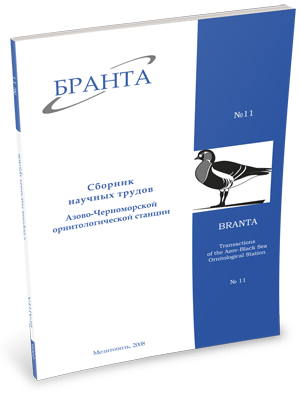
Transactions
of the Azov-Black Sea Ornithological Station



Highly pathogenic bird influenza and its epizootic among the Cormorants in Ukraine during the spring period, 2006
V.I. Chirniy, Yu.A. Ilichev, A.B. Khaytovich
Epizootic of highly pathogenic bird influenza, caused by circulation of a virus of influenza A subtype H5N1 among fowl and wild bids had struck 60 countries within three continents of the eastern hemisphere in 2005-2006. It appeared in the Ukraine not only amidst fowl in the Crimea AR at the end of 2005, but also among wild birds - the Cormorants (Phalacrocorax carbo) during spring period of 2006 on one of the islands in the SivashBay. Strains of a virus of influenza A subtype H5N1, isolated from the internal organs of these birds were highly pathogenic for Gallinaceae birds and mammalia, but had not mutations to receptors typical for man as well as mutations that cause a steadiness of virus to the main anti- influenza medicaments. Epizootic in this region was caused by a virus of influenza A/H5N1 that has been highly homologous to a virus of influenza A/H5N1, isolated from fowl during epizootic in August-November 2005 in the different regions of Russia Federation and in May-August 2005 at TsinkhayLake of the same name province in the People's Republic of China. Epizootic of highly pathogenic bird influenza (HPBI) among the Cormorants in Ukraine during the spring 2006, on the island in the SivashBay was one of the first confirmations of transmission of influenza virus H5N1 to the local populations of the breeding species of wild birds within the year following its extraordinary wide, panzootic spreading. Comparing temporal and spatial characteristics of the epizootic focuses of HPBI with the same characteristics from the wintering areas and taking into account numbers of the Cormorant within these areas, it is supposed that just birds from the Azov-Sivash population wintering mainly in Krasnodar Region of the Russian Federation have provided an influenza virus transfer from the known epizootic areas within wintering range to their nesting-places.
Read the paper in a PDF file